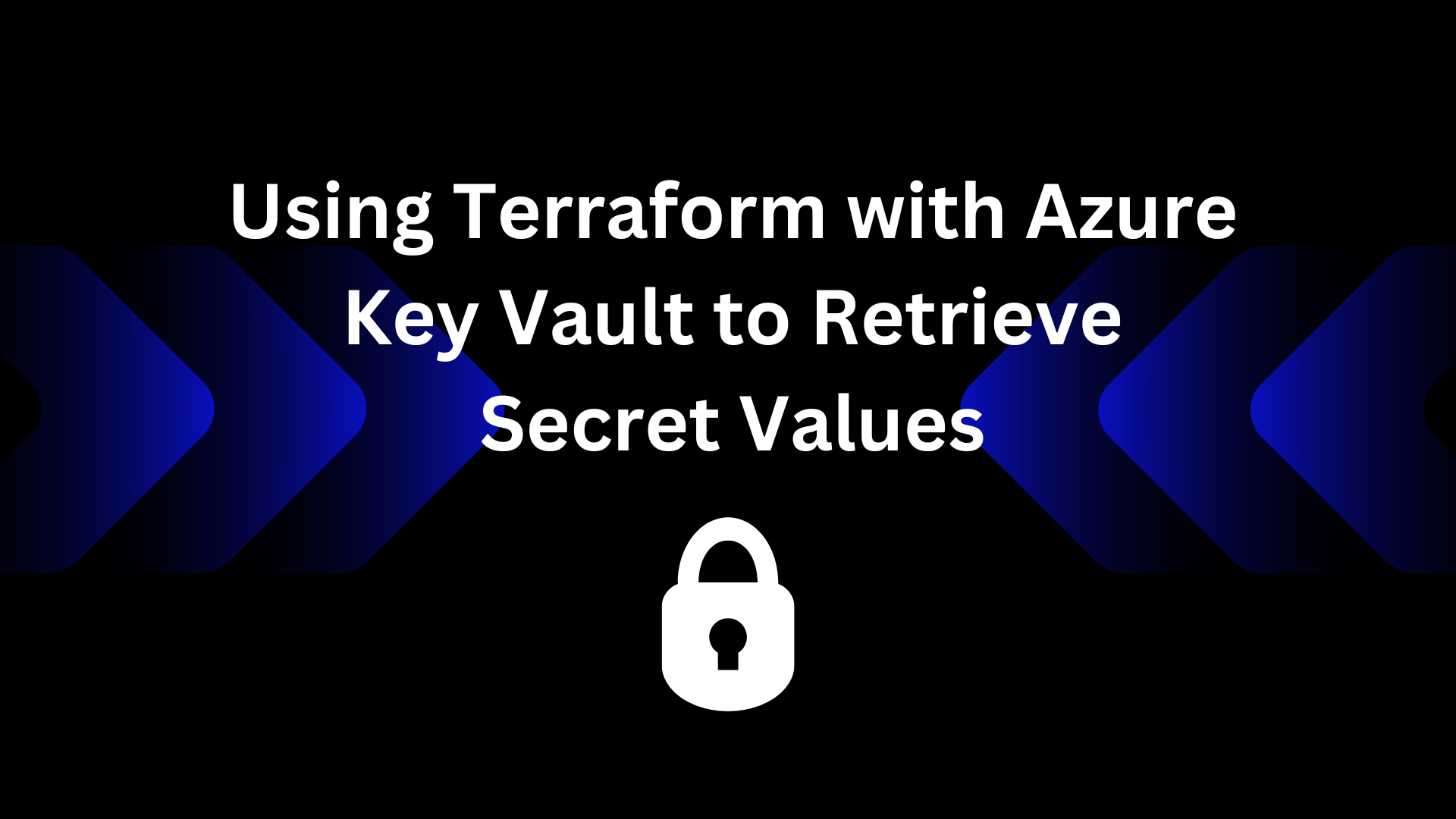Terraform Azure Key Vault Secrets: Secure Access & Management
Learn how to securely access and manage your sensitive data in Azure by integrating Terraform with Azure Key Vault to retrieve secret values.
Learn how to securely access and manage your sensitive data in Azure by integrating Terraform with Azure Key Vault to retrieve secret values.
This guide demonstrates how to securely manage sensitive information in your Terraform projects using Azure Key Vault. We'll cover setting up Key Vault, storing secrets, granting Terraform access, and retrieving secrets for use in your infrastructure deployments. By following these practices, you can enhance the security of your deployments and protect your sensitive data.
Set up Azure Key Vault and store your secret:
resource "azurerm_key_vault" "example" {
# ... Key Vault configuration ...
}
resource "azurerm_key_vault_secret" "example" {
# ... Secret configuration ...
value = "your-secret-value"
}Grant Terraform access to read secrets:
Use azurerm_key_vault_secret data source:
azurerm_key_vault_secret data source in your Terraform code to fetch the secret value from Azure Key Vault.data "azurerm_key_vault_secret" "example" {
name = "your-secret-name"
vault_uri = azurerm_key_vault.example.vault_uri
}Access the secret value:
data.azurerm_key_vault_secret.example.value.output "secret_value" {
value = data.azurerm_key_vault_secret.example.value
}Important Considerations:
This Terraform code demonstrates how to securely store and access a database password using Azure Key Vault. It first defines resources for an Azure resource group and a Key Vault. Then, it stores the password as a secret within the Key Vault. The code utilizes a data source to retrieve the secret from the Key Vault, emphasizing the importance of not hardcoding sensitive information. While not explicitly shown, the code assumes that a Managed Identity with appropriate permissions is configured to allow Terraform to access the Key Vault. Finally, the retrieved secret value is outputted, marked as sensitive to ensure its protection. The example stresses the significance of robust security measures, including least privilege access and regular permission reviews, for safeguarding the Key Vault and its contents.
This example demonstrates how to store a database password in Azure Key Vault and access it securely within your Terraform code.
1. Set up Azure Key Vault and store your secret:
# Configure the Azure Provider
terraform {
required_providers {
azurerm = {
source = "hashicorp/azurerm"
version = "~> 3.0"
}
}
}
# Create a resource group
resource "azurerm_resource_group" "example" {
name = "key-vault-rg"
location = "westus2"
}
# Create an Azure Key Vault
resource "azurerm_key_vault" "example" {
name = "my-key-vault"
location = azurerm_resource_group.example.location
resource_group_name = azurerm_resource_group.example.name
tenant_id = data.azurerm_client_config.current.tenant_id
sku_name = "standard"
access_policy {
tenant_id = data.azurerm_client_config.current.tenant_id
object_id = data.azurerm_client_config.current.object_id
secret_permissions = [
"get",
"list",
]
}
}
# Store the database password as a secret in Key Vault
resource "azurerm_key_vault_secret" "example" {
name = "db-password"
value = "your-secret-password" # Replace with your actual password
key_vault_id = azurerm_key_vault.example.id
}2. Grant Terraform access to read secrets (using Managed Identity):
3. Use azurerm_key_vault_secret data source:
# Retrieve the database password from Key Vault
data "azurerm_key_vault_secret" "example" {
name = azurerm_key_vault_secret.example.name
key_vault_id = azurerm_key_vault.example.id
}4. Access the secret value:
# Output the retrieved secret value
output "secret_value" {
value = data.azurerm_key_vault_secret.example.value
sensitive = true # Mark the output as sensitive
}Important Considerations:
This example provides a starting point for securely managing secrets with Azure Key Vault and Terraform. Remember to adapt it to your specific use case and security considerations.
General:
Code Example:
access_policy block defines who can access the Key Vault and what permissions they have. In this case, it grants the current user (or service principal) "get" and "list" permissions for secrets.output "secret_value" is marked as sensitive = true. This prevents Terraform from displaying the secret value in the console output or logs, enhancing security.Security Best Practices:
By following these best practices and using Azure Key Vault effectively, you can significantly improve the security of your Terraform deployments and protect your sensitive information.
This guide outlines how to securely manage sensitive information like database passwords in your Terraform projects using Azure Key Vault.
Steps:
azurerm_key_vault_secret data source in your Terraform code to fetch the secret value from the Key Vault.data.azurerm_key_vault_secret.example.value.Key Points:
By following these steps, you can enhance the security of your Terraform projects and protect your sensitive information.
By combining Azure Key Vault with Terraform, you can significantly improve the security posture of your infrastructure deployments. Storing sensitive information in Key Vault and accessing it securely through Terraform ensures that secrets are never hardcoded in your code or configuration files. This approach, coupled with robust security practices like Managed Identities, least privilege access, and regular security audits, provides a solid foundation for secure infrastructure management in the cloud.
 azurerm_key_vault_secret | hashicorp/azurerm | Terraform | This property allows other Azure Services (that support it) to auto-rotate their value when the Key Vault Secret is updated. ... keyvault.vault.azure.net/secrets/ ...
azurerm_key_vault_secret | hashicorp/azurerm | Terraform | This property allows other Azure Services (that support it) to auto-rotate their value when the Key Vault Secret is updated. ... keyvault.vault.azure.net/secrets/ ... Using Terraform with Azure Key Vault to Retrieve Secret Values | In this blog post we will explore how to use Terraform, with Azure Key Vault to retrieve secret values.
Using Terraform with Azure Key Vault to Retrieve Secret Values | In this blog post we will explore how to use Terraform, with Azure Key Vault to retrieve secret values. azurerm_key_vault_secret | Data Sources | Terraform | versionless_id - The Versionless ID of the Key Vault Secret. This can be used to always get latest secret value, and enable fetching automatically rotating ...
azurerm_key_vault_secret | Data Sources | Terraform | versionless_id - The Versionless ID of the Key Vault Secret. This can be used to always get latest secret value, and enable fetching automatically rotating ...